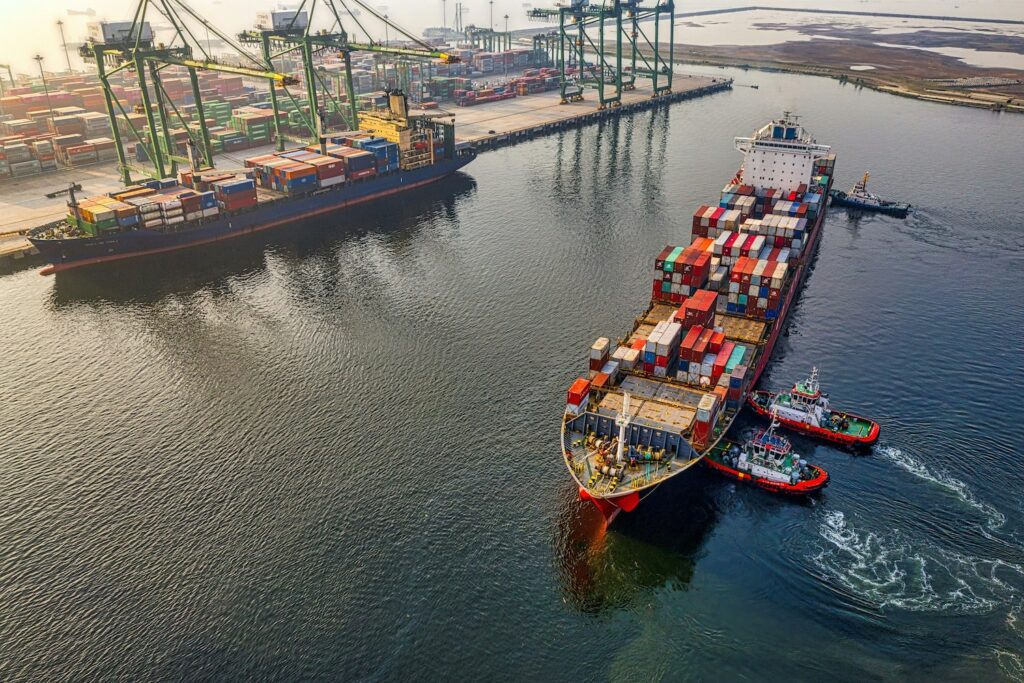Monetizing working capital should unlock new revenue opportunities, whether you’re a bank, asset manager, or corporate.
The last thing you want to do is have to increase your headcount unnecessarily. This is something that some clients or potential partners have concerns about, so we’ve set about resolving those concerns here.
In this article, we consider the question of whether banks and asset managers can get into or expand any current trade finance operations (including monetizing working capital) without increasing headcount and staffing levels.
Is it worth getting into the trade finance market?
Providing you understand the market in all its various forms, can leverage against any risk factors, then banks and asset managers are investing more in trade finance and working capital monetization.
Trade finance and working capital monetization come in several forms:
- Supply Chain Finance (SCF)
- Accounts Receivable (AR)
- Invoice Factoring (IF)
- Pre and Post-Shipment Financing
- Distributor Financing
- Reverse factoring
For example, supply chain finance (SCF) continues to grow at a rate of “7% annually, currently worth $2.34 trillion, with funds in use (FiU) at $916 billion,” according to the latest BCR Publishing’s World Supply Chain Report 2024. (Based on 2023 figures).
Supply trade finance grew at a CAGR of 26% from 2017 to 2023 despite an increase in global protectionism and tariffs. Because we are facing similar challenges and global trade uncertainty, we’ve published this article with more information about the current tariff regime.
Another sub-sector of SCF, Factoring finance (also known as working capital monetization) still grew at a rate of 5% during that same period, despite the same headwinds and uncertainty.
How funds and documents flow in supply chain finance (SCF)
(source)
What are the risks associated with working capital monetization?
Risk-wise, the beauty of working capital monetization is it’s a very low-risk financial asset class. *
If this is a market you’re already in, then you’ll know the default rates are low, quite a bit lower than other asset classes.
It’s also one of the reasons that Basel III rules were purposefully not wrapped as tightly around trade finance as other financial instruments. As the IMF noted in a policy paper about Basel III in 2014: Trade finance is “clearly not the target of the re-regulation exercise” because they are “low-risk, highly collateralized . . . with a very small loss record.”
The risk factors are low because:
- Trade finance instruments are short-term;
- Self-financing;
- Can be easily insured;
- They carry a very small loss record (less than 0.25% during a bad year: 2020);
- Whether it’s invoice factoring, accounts receivable, or SCF, everything is collateralized.
All of this makes them very attractive from an investor perspective, de-risking working capital financial vehicles for banks or asset managers looking to generate outsized returns in a short timescale.
Unlike other asset classes, such as debt financing or even real estate, the default rates of working capital monetization have always been low.
Low risk and very low default rates for accounts receivable (AR) and supply chain finance (SCF) (source)
* Naturally, as is the case with every financial product, there are risk factors. No investment is ever zero risk, and past performance of any asset class doesn’t always mean that future results will be the same. Please assess your organization’s risk appetite before making any new investment decisions. This article does not constitute investment advice in any way.
Different sub-categories of trade finance perform better than others. For example, because factoring is used mainly by small businesses; if this market is struggling then factoring won’t grow as quickly as SCF, more commonly used by larger companies.
An analysis of trade finance by Allianz Global Investors notes: “Growth has been more muted in other segments of trade finance. Factoring, used by small businesses and mid-market companies to raise finance against their invoices payable by high-quality buyers, has seen a compound annual growth rate of about 5% over the 2017 to 2023 period, according to Factors Chain International (FCI), which monitors the total volume of factoring.”
“But the rate of growth still exceeds G10 [top 10 national economies] annual GDP or world trade growth, indicating factoring is still integral to financing commercial trade.”
High growth of SCF (2017 ⏤ 2023)
Graph from: World Supply Chain Report 2024.
Your organization doesn’t even need to get close to the actual assets (contracts, invoices, letters of credit, etc.) if you don’t want to. In many cases, trade finance investments are made at one or two layers removed from the actual products.
In these cases, your firm can make investments through trade finance syndicates. The following organizations play different roles within the complex trade finance ecosystem:
- Corporates
- Banks
- Insurers
- Importers and exporters
- Shipping companies
- Trade finance providers
- Export credit agencies and third-party service providers
- Asset managers
However, if you want to get closer to the actual finance vehicles and, therefore, generate a higher rate of return, then you can get into this market directly without increasing headcount.
Can we get into or scale trade finance without increasing headcount?
Yes, your organization can. For financial institutions, our white-label platform enables seamless integration of trade finance services into your existing offerings, allowing you to leverage LiquidX’s technology while maintaining your brand identity.
Thanks to our capabilities and a deep partnership with Broadridge (NYSE: BR) ⏤ a trusted global fintech leader ⏤ you can outsource this function completely without needing to recruit more staff.
Our software takes care of everything, from digitization at one end to distribution at the other.
For corporations wanting to leverage working finance advantages, LiquidX’s digitization technology converts invoices into self-executing smart contracts, enhancing visibility and efficiency throughout your working capital lifecycle.
FinTech SaaS partners can benefit from seamless integration with your existing systems which reduces administrative overhead through automated processes.
Whether working on a white-label basis or not, we’ve never had to encourage a client or partner to recruit more staff in order to scale trade finance operations.
And yet, with our technology, clients and partners have been able to scale trade finance and generate more profit from these operations, all without staffing-up.
It’s a win-win for every organization involved.

Do we need to have software custom-built for working capital monetization?
The good news is that having custom-built software isn’t necessary. Not only is it a time-consuming and expensive investment, but it would also be a waste of money in the long run.
Software needs constant updates. If you had custom software made, you would need a team (in-house or outsourced) to keep it up-to-date and functioning well with and working alongside and integrated with other software applications.
As we covered in this article, there are a number of reasons why investing in subscription software (a SaaS platform, like LiquidX) is far more cost and time-effective than having software custom-built. Plus, there are 12 good reasons why LiquidX is the best solution for any organization looking to get into trade finance or expand current trade finance operations:
- LiquidX is white-label, so your customers don’t need to know they’re working through a third-party platform. Find out more about the LiquidX Partner Program (LPP).
- LiquidX is platform-agnostic (which means it will work with any other software either through an API or another type of integration)
- Can take in any invoice format ⏤ XLSX, PDF, etc. ⏤ and use that as workable data downstream across the trade lifecycle.
- Can manage the entire end-to-end trade finance lifecycle.
- Provides a real-time dashboard to manage risk (TradeHub).
- Will help you make significant back office savings (TradeOps); Can handle reconciliation challenges for all financial institutions.
- Can handle everything from the needs of global banks to asset managers.
- Is a multi-award-winning trade finance solution
- Includes the advantages of a deep partnership with Broadridge (NYSE: BR), a trusted global fintech leader.
- Supports all markets, with a modular software solution, that supports every market you operate in, including different currencies and asset classes.
- Will help you scale trade finance without the need to increase headcount.
- Gives you the ability to automate distribution.
With those advantages in mind, you must be wondering, is it really possible to scale trade finance and outsource the heavy lifting?
Can we scale trade finance while outsourcing everything?
The answer is yes, you can scale trade finance and outsource the heavy lifting.
Trade finance operations don’t have to be people or resource-intensive. They were, when everything was paper-based (and for many organizations that’s still the case); but now software can take care of everything.
You get complete end-to-end visibility, up and down the value chain. You don’t need a team of admin staff and analysts to monitor what’s going on. With LiquidX, everything is taken care of within our software.
Once our software is up and running and plugged into any other relevant systems, then you’re good to go. Training your team members on our software doesn’t take long, and we’re always here for continued support.
For other trade finance myths, like:
1. Trade finance is expensive;
2. It requires an all-or-nothing approach;
3. It’s high-risk;
4. This trade war will destroy trade finance;
5. You need a technical team for trade finance.
Take a look at another article we recently published.

Key Takeaways: Working Capital Monetization
Working capital monetization is one of many sub-categories of trade finance. Like every category, it’s profitable, self-collateralizing, easily insurable, and low risk.
As we’ve shown in this article, organizations don’t need to increase headcount in order to get into this sector. Or scale what you’ve already got.
LiquidX’s software can handle everything without you having to make a further investment in the recruitment and retention of more staff to manage working capital monetization.
Here’s another great reason to work with us! In December 2024, Global Business & Finance Magazine awarded LiquidX with three awards for the second year in a row:
- Best Digital Solutions For Global Trade United States 2025
- Best Technology Vendor Of The Year United States 2025
- Best Fintech For Trade United States 2025
Banks and asset managers: To request a demo of our trade finance distribution solutions, click here.
